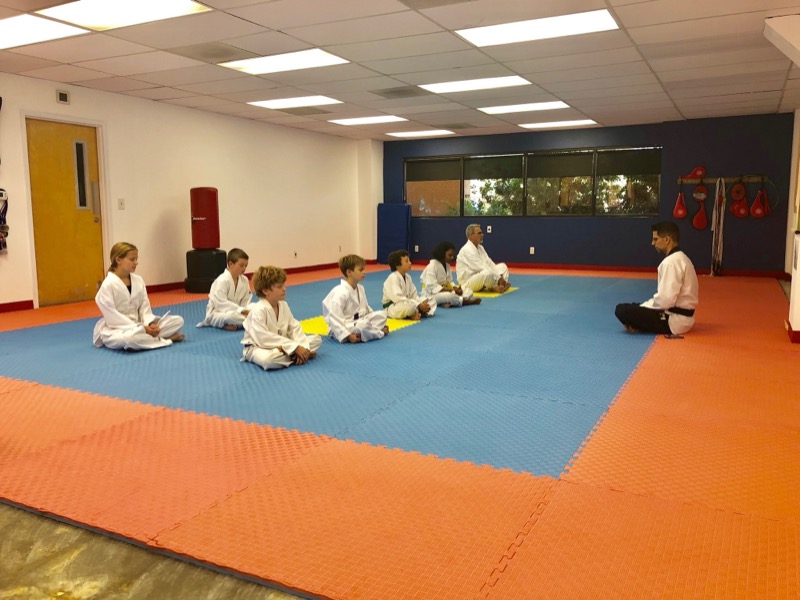
As parents, we witness the incredible journey our children embark on when they take up activities like Taekwondo. This Korean martial art, blending discipline, physical skill, and mental strength, provides an excellent path for developing agility, confidence, and resilience. But while the physical aspects of Taekwondo are essential, there’s another powerful tool that can elevate your child’s practice: visualization. This mental training technique can unlock new levels of success by fostering focus, precision, and confidence.
What is Visualization?
Visualization is the mental practice of creating detailed and vivid images in the mind, imagining actions and scenarios as though they were happening in real life. For athletes, visualization has become a cornerstone of mental preparation, enabling them to mentally rehearse movements, correct mistakes, and build confidence.
For young Taekwondo practitioners, visualization is not just about imagining success; it’s about engaging the brain in ways that reinforce physical training and emotional resilience.
The Science Behind Visualization
Research in sports psychology has shown that the brain responds to vividly imagined actions almost as if they were performed physically. This happens because visualization activates the same neural pathways as actual physical movements, helping to strengthen muscle memory and improve focus.
For children, this means visualization can supplement their physical Taekwondo practice, enhancing their ability to recall forms, execute techniques with precision, and manage the emotional challenges of sparring or competition.
How to Integrate Visualization into Taekwondo Training
Here are practical ways to help your child incorporate visualization into their Taekwondo journey:
1. Set Clear Goals and Visualize Achieving Them
Goal setting is foundational to effective visualization. Work with your child to define specific Taekwondo goals, whether it’s mastering a spinning kick, perfecting a poomsae (form), or succeeding in a sparring match.
Encourage your child to imagine themselves reaching these goals in vivid detail:
- Picture themselves confidently executing a perfect kick.
- Imagine the instructor’s approval and the applause of their peers.
- Feel the pride and joy of earning a new belt or medal.
This mental rehearsal aligns their focus and determination, creating a mental roadmap to success.
2. Engage All the Senses for Vivid Imagery
Visualization is most effective when it’s multi-sensory. Guide your child to imagine the sights, sounds, and sensations of their Taekwondo practice.
Encourage them to close their eyes and imagine:
- The feel of the mat under their feet.
- The sound of their uniform moving as they execute a perfect kick.
- The sight of the instructor demonstrating a new technique.
- The energy of a sparring match or the calm focus of practicing forms.
The more detailed the visualization, the more the brain will treat it as a real experience, making the training more impactful.
3. Perfect Techniques with Mental Rehearsal
Visualization is a powerful way to refine techniques, especially when paired with physical practice.
Encourage your child to mentally rehearse specific moves:
- Picture executing a roundhouse kick with precision, paying attention to balance, power, and follow-through.
- Imagine performing an entire poomsae sequence flawlessly, focusing on each movement’s flow and accuracy.
By mentally practicing these skills, children reinforce proper technique and build the muscle memory needed for mastery.
4. Develop a Confident and Positive Mindset
For young practitioners, confidence can waver, especially before competitions or challenging classes. Visualization helps them overcome self-doubt by allowing them to imagine success and resilience in the face of adversity.
Help your child visualize:
- Walking into the dojang with confidence.
- Staying calm and focused during sparring matches.
- Successfully executing techniques under pressure.
This mental preparation fosters a sense of control and optimism, helping children approach their practice and competitions with self-assurance.
Visualization Exercises for Taekwondo Success
1. Daily Reflection and Imagery
At the end of each practice session, encourage your child to take five minutes to reflect and visualize their best moment from the day. Whether it’s nailing a kick or receiving a compliment from their instructor, replaying this moment mentally will reinforce positive experiences.
2. Pre-Competition Visualization
Guide your child through a detailed mental walkthrough before a tournament. Have them imagine:
- Waking up feeling energized and excited.
- Arriving at the competition venue and preparing confidently.
- Stepping onto the mat and performing their techniques flawlessly.
This exercise helps reduce pre-competition anxiety by making the experience feel familiar and achievable.
3. Success Wall
Create a “success wall” in your child’s room with pictures, medals, and motivational quotes that represent their Taekwondo journey. Add goals for future achievements, helping them visualize their potential every day.
Final Thoughts
Visualization is more than just daydreaming—it’s a powerful tool that enhances physical training, builds confidence, and prepares young practitioners for success. By encouraging your child to practice visualization, you’re equipping them with a skill that extends far beyond the dojang, fostering mental strength and focus they can apply in every area of life.
Written by AI & Reviewed by Clinical Psychologist and Head Coach: Yoendry Torres, Psy.D.
Disclaimer: Please note that some blog posts may contain affiliate links, and TKD Wellness will earn a commission if you purchase through those links at no additional cost to you. We use all of the products listed and recommend them because they are companies or products that I have found helpful and trustworthy. Our website is supported by our users.